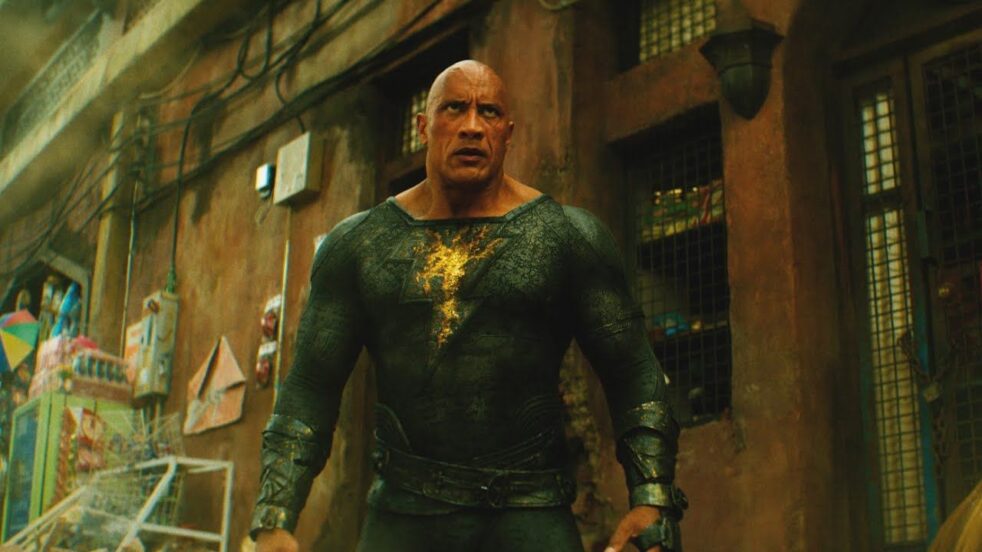From the DC Extended Universe comes “Black Adam,” starring Dwayne Johnson, Aldis Hodge, Sarah Shahi, Pierce Brosnan, Noah Centineo and other top-billed cast members.
The “Shazam!” spinoff introduces Teth-Adam, a superpowered former slave from 5,000 years ago. In a present-day city known as Kahndaq, the citizens suffer under the occupation of the Intergang, a military group in search of the Crown of Sabbac, a magical artifact known to give its wearer immense power.
When Teth-Adam (later called Black Adam) is awoken and freed from his 5,000-year resting place, he is ready to seek justice for the people of Kahndaq in his own unconventional way. He is subsequently confronted by the members of the Justice Society of America, led by Hawkman (played by Hodge), and Kahndaq-native archaeologist Adrianna Tomaz (played by Shahi). The two-hour film is packed full of action, superhuman combat, culture and — believe it or not — social commentary.
A week before the movie’s release on Oct. 21, actors Hodge and Shahi sat down with various members of the press, including a representative from the Technique, to discuss the impact of the film not just for themselves as individuals but also for today’s world as a whole.
As actors of color — Hodge being Black and Shahi being Spanish-Iranian — the two talked about the lack of superhero role models for them growing up and how that influenced their respective characters. According to Hodge, “[the superheroes growing up were] all just imaginary because there’s no real reflection or representation of me [in comics].” Shahi agreed, saying, “I couldn’t relate to Wonder Woman or Supergirl, so I didn’t see myself in any of them.”
Both actors agreed that they had taken inspiration for their characters from their mothers. Hodge explained that his mother “was my leader for very many years of my life, and in terms of leadership, that’s who I pull from to create the leadership that Hawkman charges forward with because [she’s] the only real superhero that I know.”
Hodge has spent about half of his career with the goal of joining “the superhero universe” in order to be the representation that neither he nor Shahi got growing up.
A prominent topic of discussion that prefaced the film’s release was whether or not its titular character, played by Dwayne Johnson, is to be viewed as a hero or a villain. While the people of Kahndaq see Black Adam as a hero and a champion of the people, he seldom displays textbook “heroic” qualities. He kills mercilessly and without a second thought, which becomes his main point of contention with the Justice Society. This underlying discussion of morality and justice weaves throughout the entire film in a way that feels subtle enough that it is not in viewers’ faces, but still noticeable in a way that has the ability to make them think.
When asked about the relative moral grayness of many of the characters and how/what that added to the film, Hodge told the interviewers, “[the movie] poses the question ‘What is justice? Is what’s right for one right for all?’ … We get to have a real conversation, a substantial conversation, in the midst of all of this wonderful action… [and you find that] there’s a duality here that it’s not just right and wrong. There’s a middle ground, and that allows us to have an intellectual conversation about how we deal with one another and how we move forward.”
His character, Hawkman, is seen throughout the movie as a very morally “black and white” hero. Hodge describes Hawkman’s stance as “having a very principled construct of what justice is.” In Hawkman’s opinion, heroes are heroes and villains are villains. There are “dos” and there are “don’ts,” and there are no in-betweens. But Black Adam pushes those boundaries, challenging those beliefs in a way that leaves audiences unsure who is “wrong” and who is “right.”
Shahi also spoke on Black Adam’s role as a morally gray main character, saying, “he’s really blurring the line between good and bad, and I’ve … found myself thinking that’s like real life too, in a way, because we’re not 100% saints all the time, we’re not 100% sinners all the time. … We make choices in moments because we feel like it’s the right thing to do, whether [or not], looking back, [it] was the right or wrong thing to do, you were still trying your best to achieve whatever it is that you wanted.”
Shahi’s character, Adrianna, is native to Kahndaq and sees the oppression that her people face every day from outsiders. According to the actress, Adrianna “wants to protect her people, her son — everything. She can’t do that unless Intergang goes ‘bye-bye’. The only way [that is going to happen] is if someone kills them.”
Yet no one in the audience would say that she is an antagonist because they recognize how her life experiences have shaped her views, and how the sustained cultural suffering can “justify” the way that Black Adam exacts justice through violence.
Despite being filled with seemingly heavy topics, the movie is able to wrap its social relevance with humor, magic and action scene after action scene.
Many audience members might not even consciously process the commentary hidden within the movie until after it is over and they have the chance to reflect on the plot.
For avid superhero fans, “Black Adam” should definitely be added to the watch list. It expands the DC Extended Universe in a way that feels unforced and does so with fairly quality effects — something many superhero movies have been lacking lately.
Whether one wants to enjoy the movie at face value for its many fight scenes and character interactions or they are interested in reflecting on the messages lying amongst the fray, it has something for all movie-goers.
